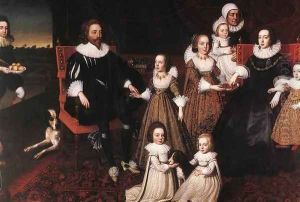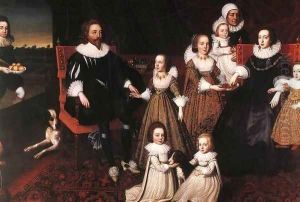Cornelius Janssens (Johnson) Ceulen Paintings
Cornelius Janssens van Ceulen, also known as Cornelius Johnson, was a celebrated Dutch-born painter who gained significant recognition in England during the early 17th century. Born in London in 1593 to Dutch parents, Janssens was part of the wave of talented artists from the Low Countries who had a profound impact on the British art scene. His family had fled the Spanish-controlled Netherlands due to religious persecution, settling in England where they found a more tolerant environment. Janssens's early life in London provided him with a unique blend of cultural influences that would later be reflected in his art.
Janssens is primarily known for his exquisite portraiture, which combined the detailed realism characteristic of Dutch art with the elegance and style demanded by his English clientele. His ability to capture the subtle nuances of expression and character made him a favorite among the English nobility and gentry. By the 1620s, he had established himself as one of the leading portrait painters in England, rivaling even the likes of Anthony van Dyck, who would arrive in England a decade later. Janssens's portraits are particularly noted for their meticulous attention to the textures of fabrics and the grace with which he rendered his subjects' attire, a testament to his mastery of technique and his keen eye for detail.
Despite his success, Janssens's career in England was not without challenges. The English Civil War (1642–1651) and the changing political landscape brought about a decline in patronage for royal and noble portraits. In the 1640s, amidst the turmoil, Janssens decided to return to the Netherlands, where he continued to work and receive commissions. He settled in Utrecht and later moved to Amsterdam, where he adapted to the evolving Dutch artistic trends, focusing more on genre scenes and landscapes. However, portraiture remained his primary domain, and he continued to excel in this genre until his death in Amsterdam in 1661.
Janssens's legacy is marked by his contribution to the development of portraiture in England and his role in bridging Dutch and English artistic traditions. His works are preserved in numerous collections, including the National Portrait Gallery in London and the Rijksmuseum in Amsterdam. Through his portraits, Janssens has provided a lasting record of the faces and fashions of 17th-century England and the Netherlands, capturing the essence of an era on canvas.


